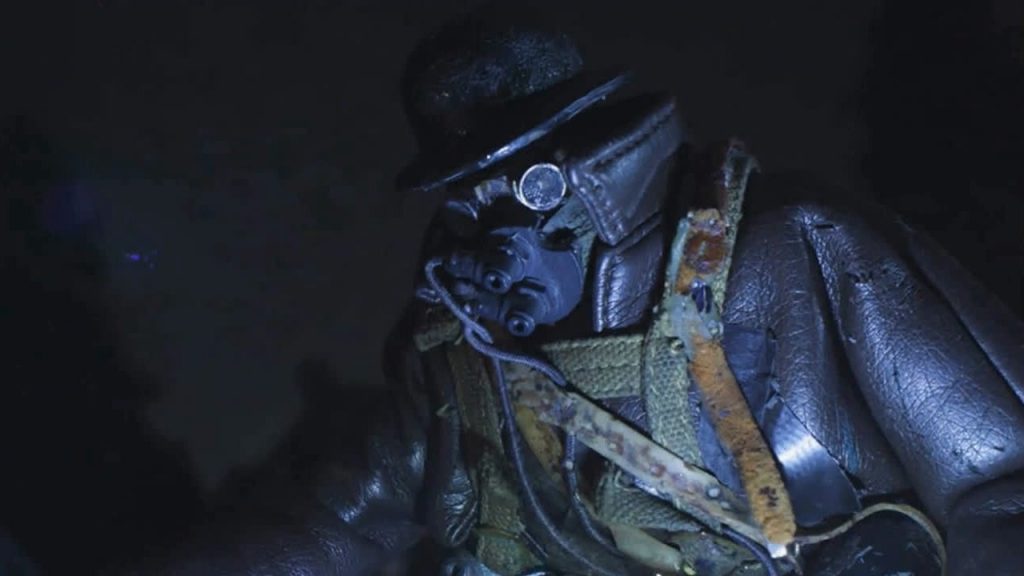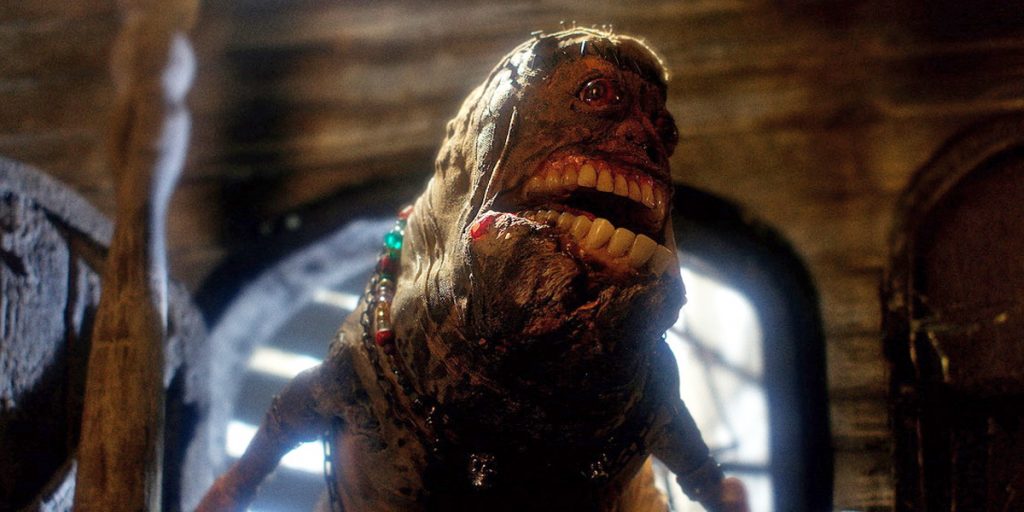Mad God is an apocalyptic nightmare of the highest order and boasts some of the most impressive stop-motion animation and world-building of the year.
The sense of foreboding is apparent from the very first shot in Phil Tippett’s Mad God. Opening on a looming tower with a baying crowd at its base and standing in front of a burning hot and glaringly orange sun, the deep colour palette and intensity of Apocalypse Now (1979) instantly comes to mind, before the darkness of lightning clouds slowly starts to seep across the screen. When they successfully plunge the screen into complete darkness – the operatic, classical music still playing – the large, red title of “Mad God” hits you. Even such an intense opening as this can’t prepare you for what is to come and describing what follows as a nightmarish hell barely scratches the surface.
Mad God’s narrative is a difficult one to explain, and the lack of dialogue or monologues doesn’t make things any easier. In the simplest sense, it is about an evil mad scientist sending faceless minions to explore dark and decrepit dystopian worlds, but even then, there are numerous scenes which seem to do away with this particular plotline. The lack of clear narrative might frustrate some but when the visuals are this impressive, the plot almost becomes secondary. Tippett – whose most notable work has been on the animation in The Empire Strikes Back (1980) and as a dinosaur supervisor on Jurassic Park (1993) – and his full-blown, madly creative genius is here to bear in all its demented glory; there are a few characters in this film that could be the titular Mad God but it could also just as well be referring to Tippett himself. First conceiving of the idea in 1990, Tippett has long fought against a lack of budget to make his masterpiece. Three other Mad God short films (released during the 2010s) precede this feature length version and those three snippets give a wonderful taste of this hellish world that expands further here.
The destroyed world of Mad God is so impressively horrific that it makes the dystopias of films like The Road (2009) or Mad Max: Fury Road (2015) seem like idyllic holiday destinations. It is brash and loud, home to collapsed buildings, warzones, intimidating towers, and all sorts of disfigured monstrosities. Early shots of three bickering Father Christmas lookalikes or a masturbating doll only hint at the vivid imagery that follows. Yet for all its aggressive nihilism, Mad God has equally quiet moments, not least in an opening scene that depicts a faceless, nameless ‘thing’ (because there are not many humans about in this world) descending into the bowels of this seething planet. Dan Wool’s atmospheric original score elevates proceedings in both the loud and the quiet sections.

Mad God is not simply all style though: there is enough substance here to demand repeat viewings, hinting at a piece of work that is more complex than it initially seems. Tippett’s screenplay touches on a host of issues present in our world today, from animal cruelty, sex slavery, industrialisation, pollution, nuclear power, war and perhaps most of all, abuse of workers. One of the most memorable scenes from Mad God depicts an intense, prolonged surgery with blood and organs drawn out of the body on the table as well as coins and jewellery. The body, whose eyes look around in fear and pain throughout, is identical to thousands of others in neighbouring rooms and out in the wider world, all working relentlessly with little reward. They are merely money-making commodities to those in power, who have little regard for their health, and even though the world of Mad God might seem like an unimaginable hellscape of the future, it has eerily stark similarities to the current state of civilisation.
The painstaking set and creature building is truly something to admire in Mad God, a true indication of Tippett and his team’s undoubtable skill in this field. Everything you see on screen has been rendered from nothing and animated in traditional stop-motion techniques. The shared cinematography credit for Tippett and Chris Morley highlight an undeniably talented duo, who take these wonderful, haunting creations and designs and bring them to life even further, creating a living, breathing, horrendously disturbing world. Even the ticking of a clock is given a torturous feeling at one point as the hands lumber around the face, slowing with every passing second.
A lack of clear narrative will frustrate some and the relentless gore, death and violence will be a further turnoff for many. At times Mad God can drift away into what feels like a series of surreal vignettes as opposed to anything wholly cohesive, and yet Tippett manages to bring it back to something suitably satisfying by the conclusion with an ending that doesn’t answer all the questions but certainly vocalises some great, philosophical themes. In Mad God, the madness and barbarity of humanity is drawn in immense detail and that might actually be the scariest thing about this film: not the grotesque, otherworldly beings or the disturbing imagery, but the chillingly similar notions to this world with ours.
Mad God premiered at the 2021 Edinburgh Film Festival on 21st August, 2021, and is now available to watch on digital and on demand.

